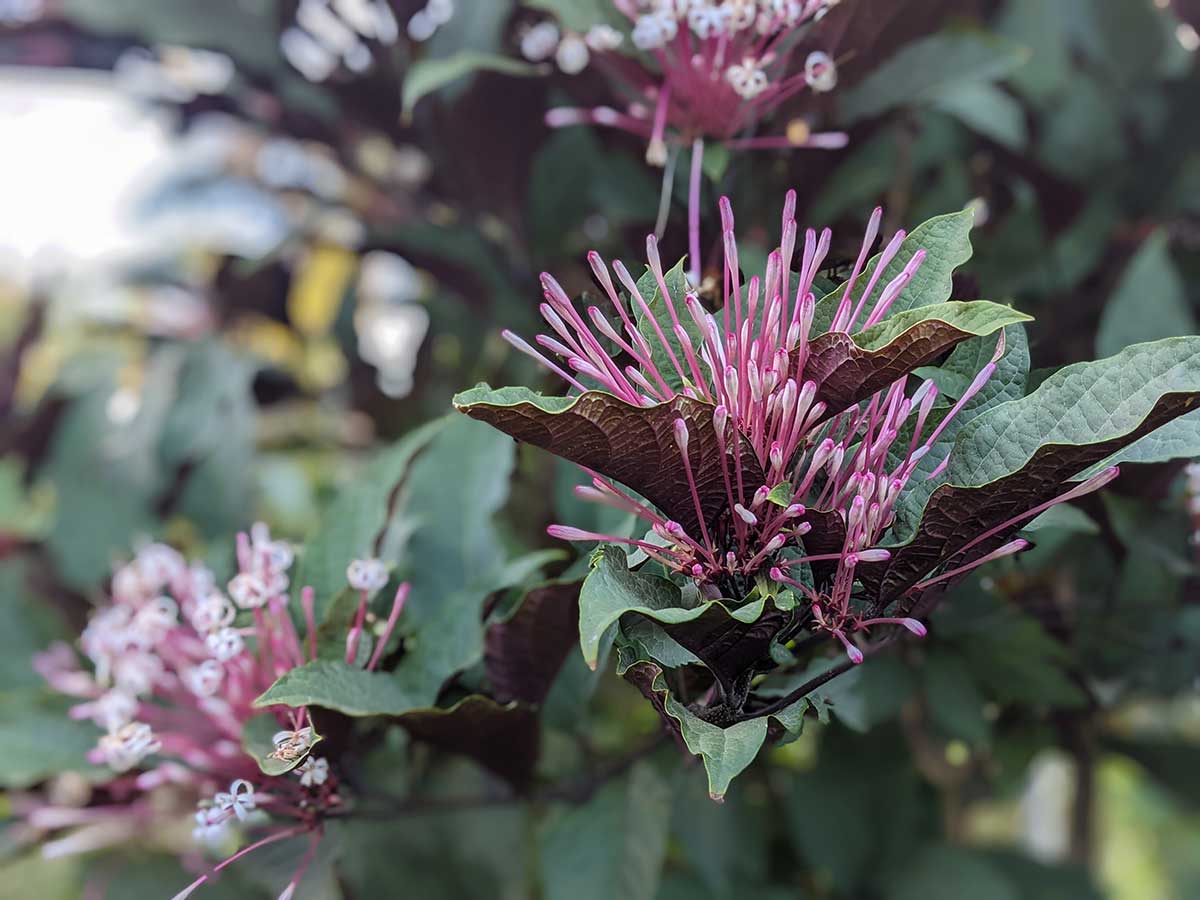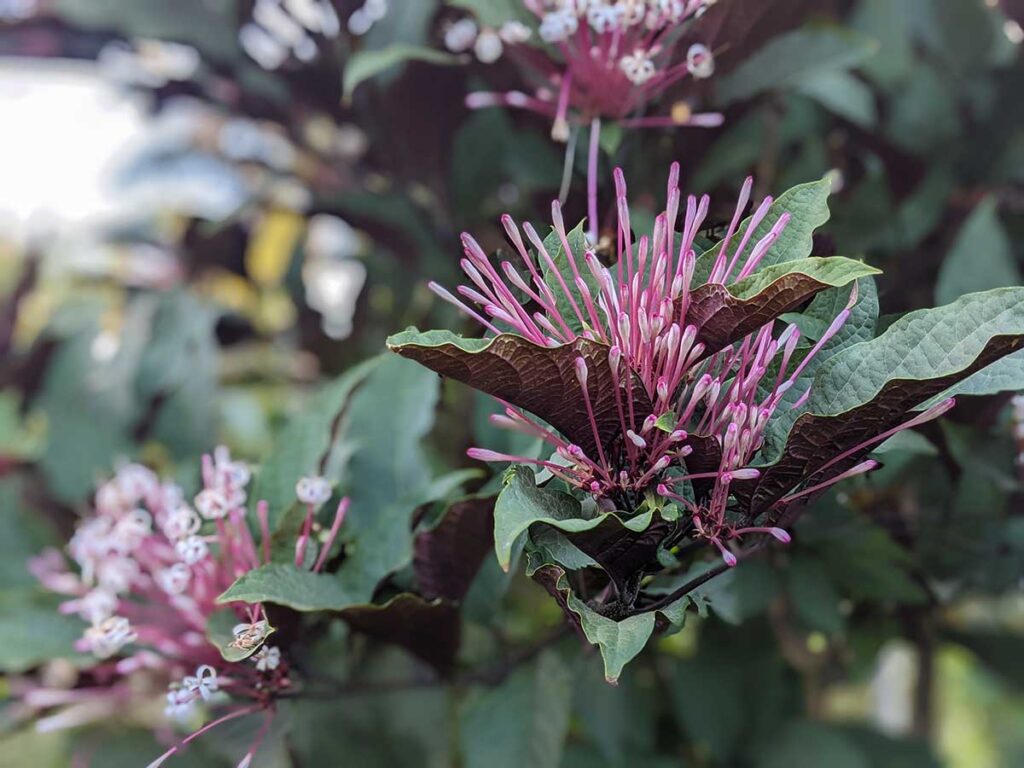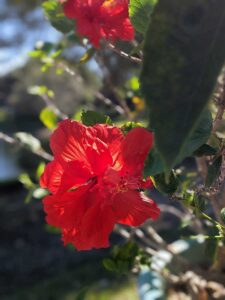 Any visit to tropic lands has a special feel but especially so during the early spring months. Enjoying a break from the chill of the winter wonderlands is a pleasant interlude. There is a sense of burgeoning expectation. The lush greenery vibrates with life. Saturated colors both invigorate and soothe the mind. It is pure pleasure.
Any visit to tropic lands has a special feel but especially so during the early spring months. Enjoying a break from the chill of the winter wonderlands is a pleasant interlude. There is a sense of burgeoning expectation. The lush greenery vibrates with life. Saturated colors both invigorate and soothe the mind. It is pure pleasure.
Nothing says tropics like a great stand of hibiscus. Whether solitary or in miles of hedges, hibiscus awash with vibrant blooms is a happy sight. Sun, heat, humidity, and a good fertility regimen keeps these in tip top form. In the northern regions, where they are grown as container beauties, the same applies. Do provide full sun, provide water, and fertilize. Do not put them outside to live until day and night temperatures are consistently above 50 degrees F. Unexpected exposure to cold weather may impede the constancy of bloom production.
Even though blooms develop on new wood, take care when deciding on pruning timing and technique. Cold hardy hibiscus prefer a trim in late winter or very early spring. Severity of that pruning is left up to gardener discretion. The more removed, the longer time required to retrain subsequent growth. For tropical hibiscus, frequent light pruning with an infrequent severe trim will serve most hedges and controlled shapes very well. Do take the time to carefully check desired pruning techniques and appropriate timing based on zonal requirements.
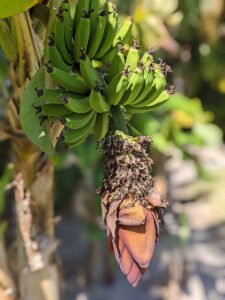 Banana plants are also a favorite. Although often called trees, they are technically a perennial herb distantly related to gingers. The leaves have such presence with their smooth density. They have amazing texture without trying. Differing banana types, as with all plants, produce different bananas. Even the tiniest of fruits can offer a lovely flavor. As a bonus, leaves are edible for some animals e.g., cows and horses.
Banana plants are also a favorite. Although often called trees, they are technically a perennial herb distantly related to gingers. The leaves have such presence with their smooth density. They have amazing texture without trying. Differing banana types, as with all plants, produce different bananas. Even the tiniest of fruits can offer a lovely flavor. As a bonus, leaves are edible for some animals e.g., cows and horses.
Growing a banana is not tremendously difficult. If fruit production is the desired outcome, expect a bit more work than if just producing a beautiful, leafy focal point. With a desired temperature range between 78 – 86 degrees F., growing them indoors will be a challenge for the average home. If growing bananas are a passion, especially outside of their natural habitat, invest in a greenhouse or two. Wherever they are grown, focus on the basics of water, heat, humidity, light, and fertility. These must be close to optimal for good leaf development and solid fruit production. 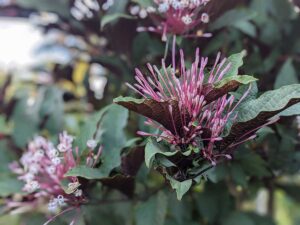 Bananas require a lot of all those basics but will forgive missteps if enough water and nutrients are provided for those massive leaves.
Bananas require a lot of all those basics but will forgive missteps if enough water and nutrients are provided for those massive leaves.
Make no mistake, they are heavy feeders. Systemic water loss through leaf evaporation and nutrient loss from leaf and fruit production are apt to drain the plant rapidly. As they are lovers of heat and humidity, it is not the heat that will take them out. If there is plenty of available, non-standing water, bananas can withstand a good bit of excessive heat. The cold, not so much. Even with close attention paid to the needs of the banana, do not be alarmed if your plant dies back. If there are suckers already forming at the base, choose a strong one to train as the new stem. Cut back the dead materials of the main 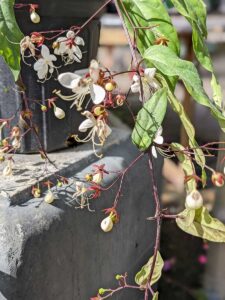 stem and allow the sucker to grow. Don’t worry, as this is the natural cycle for the banana plant. If there were no disease or pest concerns, place the old stems and leaf tissue around the base of the new developing plant.
stem and allow the sucker to grow. Don’t worry, as this is the natural cycle for the banana plant. If there were no disease or pest concerns, place the old stems and leaf tissue around the base of the new developing plant.
Clerodendrum doesn’t get much play in northern climate gardens but is seen in many forms in warmer areas. Clerodendrum quadriloculare (Fireworks or Winter Starburst) gets heavy use for its large landscape impact. With purplish green leaves set off by the bursts of white flowers in February and early March, it commands notice. At a mature height of 12-15 feet, it is hard to miss. It is easy to grow in average soil in warmer climates and it will tolerate some extremes once established.
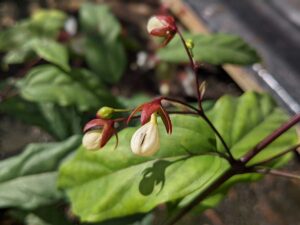 Clerodendrum “Musical Notes” is quite a lovely variety. As the white flowers open, their unfurling form resembles written musical notes. Another lovely plant is “Light Bulb,” which is true to its name. The flowers look like adorable little white light bulbs as the blooms form and open. As none are cold hardy enough for use in zones colder than 6, but certainly consider using them as unusual and interesting container plants in colder climates.
Clerodendrum “Musical Notes” is quite a lovely variety. As the white flowers open, their unfurling form resembles written musical notes. Another lovely plant is “Light Bulb,” which is true to its name. The flowers look like adorable little white light bulbs as the blooms form and open. As none are cold hardy enough for use in zones colder than 6, but certainly consider using them as unusual and interesting container plants in colder climates.
Performance of Clerodendrum is enhanced when temperatures are above 60 degrees F with consistent heat and humidity. If using in containers, do not put them out until summer has firmly arrived. In warmer climates where Clerodendrum can be used in the landscape, check state lists to make sure chosen cultivars are not deemed invasive.
